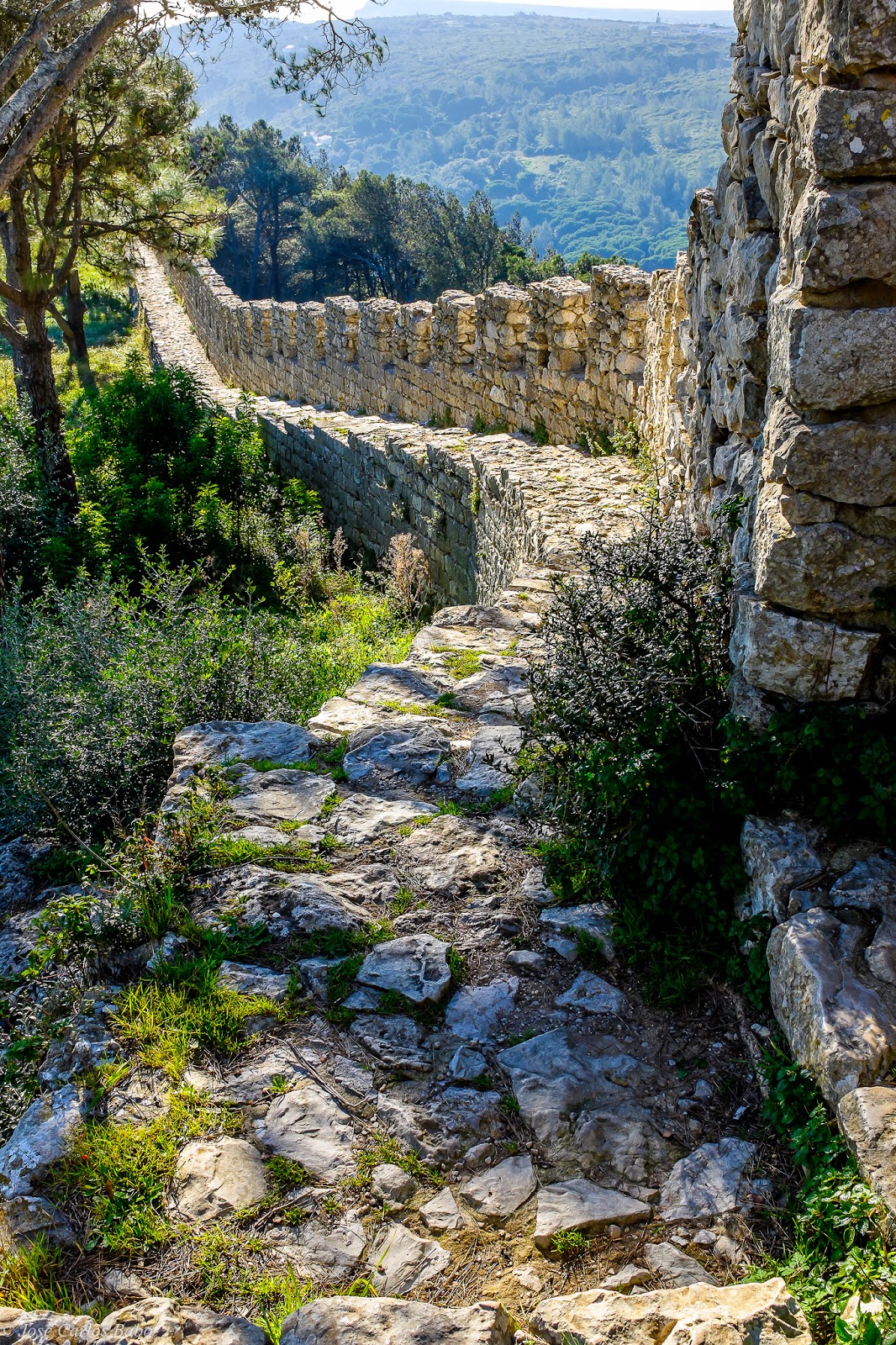The castle of Sesimbra, a Fishing village South of Lisbon, the oldest fortress of Sesimbra, was built on top of a hill, north of the village, dominating the whole bay.
 |
| The view from inside the Castle to the bay |
This remarkable military work of the Saracens, has not released until today, any artifact that allows us to date the time of its construction. It was only found in this fortress some prehistoric and proto-historic materials indicating the existance of prior occupation of the same.
It was conquered from the Moors in February 21, 1165, by D. Afonso Henriques and abandoned in June 1189, due to the onslaught of the Almohad Caliphate Mirambolim Iacube then king of Seville, which regained Alcacer do Sal and continuing until Sesimbra whom attacked the castle destroying its entire defensive structure to its foundations. Only in 1200 was possible to have the final decision of Sesimbra, in the reign of Sancho I, with the military aid of the Crusaders. The Monarch then ordered the reconstruction of this fortress, having featured the friends of King William of Flanders, who offered to populate and defend this important part of the coastline.
Sesimbra
According to some, Sesimbra’s name comes from Zambra, from Roman oprigins, others claim to have been Sesimbrique from Celtic Origins or Zimbra from Celtiberia.
Anyway, today is a beautiful fishing village.
 |
| The view of Sesimbra from the Stonghold |
 |
| The Eastern Door (Porta do Sol) |
 |
| The Citadel - The place where the "Alcaide" (Governor) and his family lived
The “Alcaide” was the representative of the military order of Santiago(Saint James)
|
 |
| The view from the Donjon (Stronghold) |















































